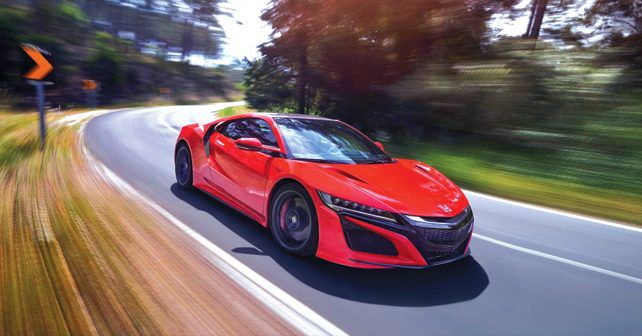
Jens feels that the Japanese are back to providing sleepless nights to the European and American establishments once again.
There were two periods when Japanese carmakers caused deep fear to the European and American carmakers. The first period was in the 1970s, when their affordable and reliable cars provided a stark contrast to the gas-guzzling offerings by the Americans. A generation of buyers turned away and never came back, and the impact is felt to this day – and its represented by the incredible success of the Honda Accord and the Toyota Camry in the US market.
The attack on America was expanded into a global mission, and when the Japanese cars – quite refined, and typically with far more generous equipment levels – hit the European market, politicians and media were alarmed to the extreme. They demanded quotas! Germany’s most influential magazine, Der Spiegel, titled breathlessly: “The Yellow Danger.”
While reliable, well-equipped and reasonably priced, the cars were still dynamically inferior to their European counterparts. But it was this initial success that allowed the Japanese to develop a generation of cars that was not just on par with the established premium players, but, at times, surpassed them.
A new era of Japanese domination began, and it was characterised by cars that we still view as iconic – the original Honda/Acura NSX, which beat the Ferrari 348 and the Porsche 911 in virtually every comparison test; the Nissan Skyline GT-R, with its incredible chassis and unique RB26 straight-six engine; coupes like the Nissan 300 ZX Twin Turbo and the Mitsubishi 3000 GT VR-4, veritable Porsche 928 fighters; and, of course, the first generation of luxury sedans, represented by the Lexus LS400 and the Infiniti Q45. They instilled fear into the hearts of European carmakers.
Yet, at some point down the road, the Japanese lost it. 10 to 15 years later, they had deserted some of the upmarket segments that they once entered so boldly; Mitsubishi fiddled with direct-injected engines no one needed; Acura threw away its iconic nameplates and went for indistinguishable letters; Toyota and Lexus became lazy, with dull cars that failed to move the needle. “Back then, every minute, we worried what the Japanese would come up with,” a German CEO tells me, adding: “Today, we’re scratching our heads because so little of it makes sense.”
Is this about to change? In the recent weeks, I’ve spent extensive time in two Japanese offerings that makes me think that they may find that edge once again. I found these machines to not just be on par with their European (and American) competitors, but actually superior. The two cars in question are the new Honda/Acura NSX and the Lexus LC Coupe.
I wasn’t particularly partial towards the NSX going in – a car that suffered from a prolonged launch process. It took forever to get it to market, and I felt that Honda/Acura could have done a better job with the styling of the car. But it looks better in person than on the show floor. The aggressive proportions really work, and the NSX is a real attention-getter.
Going hybrid, with the weight penalty of the E-motors and battery pack, seems to be a questionable strategy for a super sports car. But in the case of the NSX, electrification enhances the performance vastly. Total system power is rated at 507 horsepower. The heart of the car is a twin-turbocharged V6 that works in harmony with three electric motors. The E-motors eliminate even the slightest lag in throttle reaction, and power is channelled to all
four wheels.
Whether you compare it to a conventionally powered sports car or to a hybrid like the BMW i8, the NSX represents an absolute triumph of technology – faster than almost all of them, more responsive, and with laser-sharp handling. It is, quite possibly, the best sports car I’ve ever driven.
Meanwhile, Lexus has launched a similarly fascinating sports car with a vastly different approach – the LC500 and LC500h, based on the brand’s new top-level platform and fitted with either a naturally aspirated 5.0-liter V8 or a hybrid 3.5-liter V6. In the 500h, the hybrid module is tuned to maximize efficiency, but enhances tip-in response as well. The V8-powered LC500, by contrast, is an old-school, high-revving sports car with an incredible soundtrack that faintly resembles a Ferrari. Both powertrains make for supremely comfortable long-distance cruisers.
But the greatest attraction, to me, is the fantastic styling of the LC – derived straight from the 2012 LF-LC concept car and developed into a series production car without the usual design competition. With this entry in a segment that seems to be growing again, Lexus is on the map again as a serious, top-level contender.
And it’s not just the upper-premium cars. I can’t wait, for example, to get behind the wheel of the Civic Type-R – a 270km/h compact that thankfully kept its manual transmission, and I’m looking forward to the jointly developed Toyota-BMW sports car. Nissan has successfully entered a number of niches, and Subaru continues to fascinate me with its unique technological approach.
Hopefully, then, all this means that Japan is ready to attack for a third time.
























Write your Comment